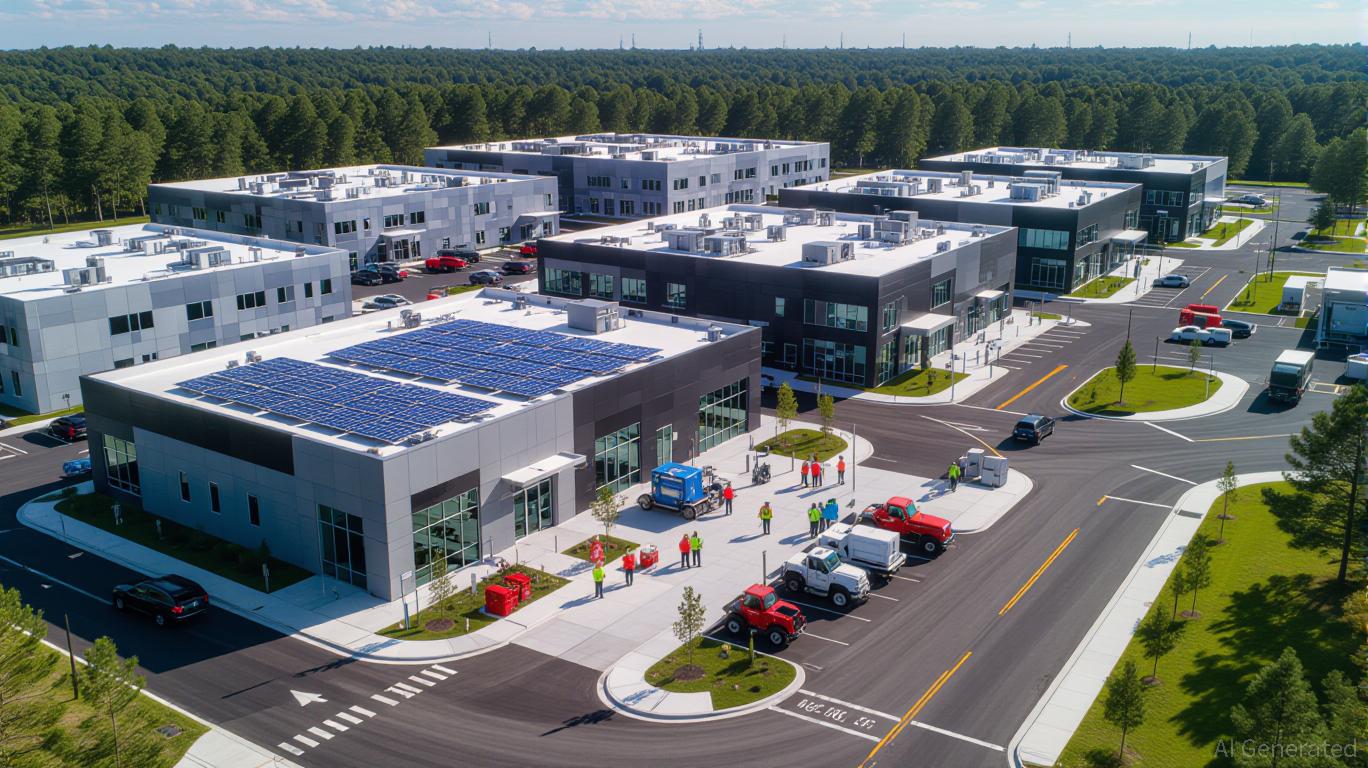The Federal Reserve's Change in Policy and How It Affects Solana (SOL)
- The Fed's 2025 policies—stablecoin regulations, rate cuts, and halted QT—are reshaping crypto markets, with Solana (SOL) emerging as a key beneficiary. - Stricter stablecoin oversight under the GENIUS Act boosts trust in digital assets, while Solana's $YLDS stablecoin bridges traditional and crypto finance. - Fed rate cuts and QT cessation inject liquidity into markets, driving capital toward Solana's high-speed DeFi infrastructure and staking ETFs. - Despite policy uncertainty from Fed divisions, Solana
Regulatory Certainty and Stablecoin Security
The Federal Reserve’s 2025 approach to stablecoins, formalized through the GENIUS Act, enforces strict reserve standards and oversight for issuers,
Easing Monetary Policy and Altcoin Growth
The Federal Reserve’s indications of rate reductions in late 2025,
QT Suspension and Increased Liquidity
The Federal Reserve’s move to conclude its QT initiative in December 2025
Investor Confidence and Policy Ambiguity
Despite these positive factors, disagreements within the Fed regarding the speed of rate reductions—exemplified by Governor Christopher Waller’s push for swift cuts versus Vice Chair Philip Jefferson’s more measured stance—
Conclusion: Strategic Perspective
The Federal Reserve’s 2025 policy adjustments are shaping a dual narrative for the crypto sector: enhanced regulatory stability for stablecoins and supportive conditions for risk-oriented assets. Solana, with its regulated stablecoin initiatives and DeFi-focused infrastructure, is in a strong position to capitalize on both fronts. While policy ambiguity remains, the broader economic outlook—characterized by moderating inflation and potential job market recovery—indicates that the momentum for altcoins like Solana is likely to persist. Investors should keep an eye on the Fed’s December rate announcement and the ongoing development of Solana’s ecosystem, especially the uptake of yield-generating stablecoins such as $YLDS, as important signals for future trends.
Disclaimer: The content of this article solely reflects the author's opinion and does not represent the platform in any capacity. This article is not intended to serve as a reference for making investment decisions.
You may also like
XRP News Today: Institutional ETFs and Derivatives Indicate a Positive Shift for XRP Above Crucial Support Levels
- XRP rebounds above $2.20 as buyers defend key support, supported by $107.92M in ETF inflows and rising institutional confidence. - Technical analysis highlights a bullish "Staircase to Valhalla" pattern, with $2.26-$2.52 resistance levels and Fibonacci targets signaling potential for $2.69. - Derivatives data shows aggressive long-positioning (OI: $4.11B), with Binance's 2.56 long-short ratio and 57% options OI surge reinforcing bullish momentum. - Institutional ETF conversions (e.g., Grayscale Zcash) an

Why Switzerland's Temporary Halt on Crypto Highlights Worldwide Regulatory Disunity
- Switzerland delays crypto tax data-sharing until 2027, highlighting global regulatory fragmentation amid CARF adoption challenges. - Two-phase approach prioritizes domestic law alignment before reciprocal agreements with key economies like U.S., China, and Saudi Arabia. - 75 CARF signatories progress unevenly, with U.S. and Brazil proposing alternative frameworks, complicating cross-border compliance. - Swiss crypto firms face operational risks during transition, as critics warn of regulatory arbitrage b

Thailand’s Bold No-Crypto-Tax Move: Shaping a Future Southeast Asian Crypto Center
- Thailand imposes 0% capital gains tax on local crypto trading (2025-2029) to boost its digital economy and attract investors. - The policy aligns crypto profits with tax-exempt stock trading, supported by a 2024 Bitcoin ETF and Tourist DigiPay pilot for foreign visitors. - Regulatory caution is evident through biometric data shutdowns and PDPA compliance, balancing innovation with security amid regional competition. - Projected $1B annual economic gains aim to position Thailand as a top Southeast Asian c
The Transformation of Webster, NY: Targeted Property and Infrastructure Initiatives After the Xerox Era
- Webster , NY, secured a $9.8M FAST NY grant to transform the former Xerox campus into a shovel-ready industrial hub, part of Governor Hochul’s upstate revitalization strategy. - Infrastructure upgrades, including road and sewer improvements, aim to attract advanced manufacturing and logistics firms by reducing development risks and costs. - The Xerox campus redevelopment includes mixed-use projects, projected to create 250 jobs and boost property values through residential and commercial integration. - W
